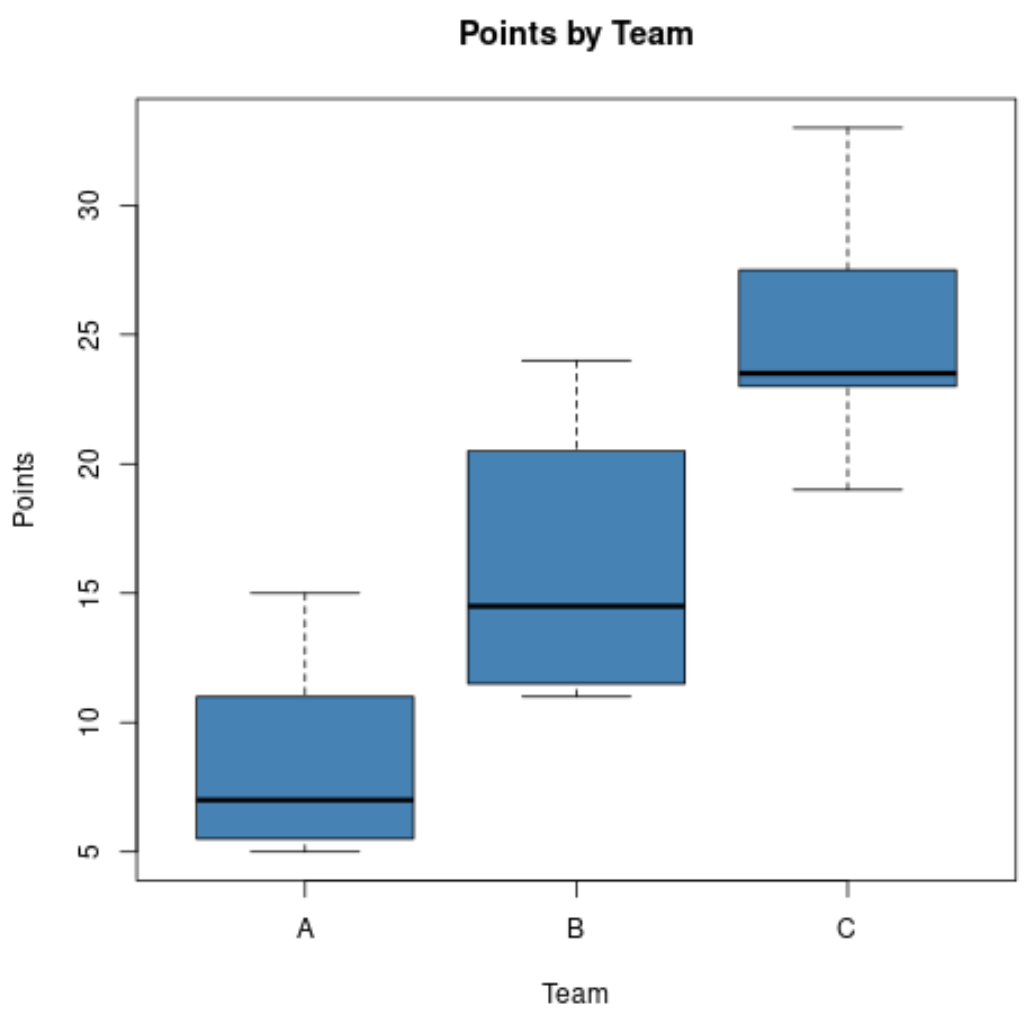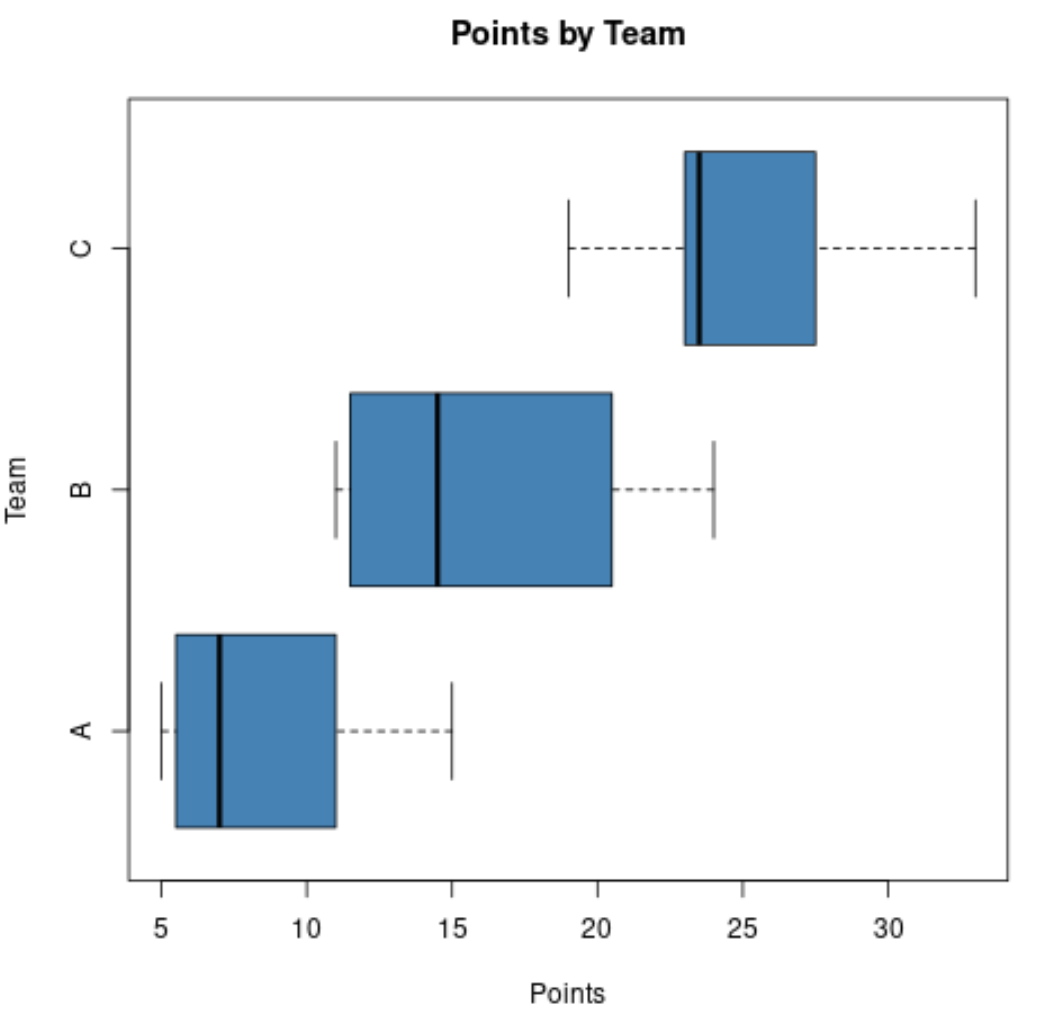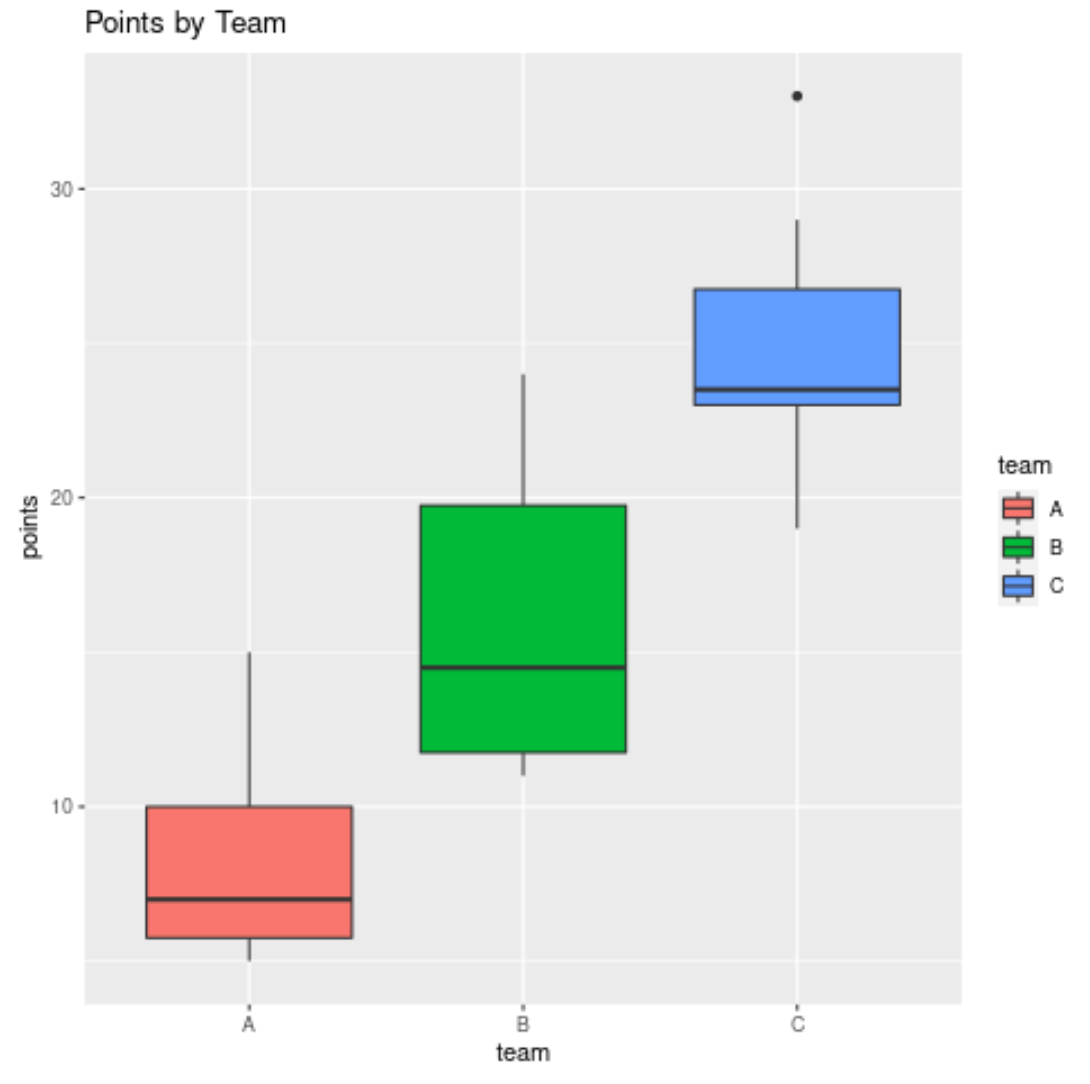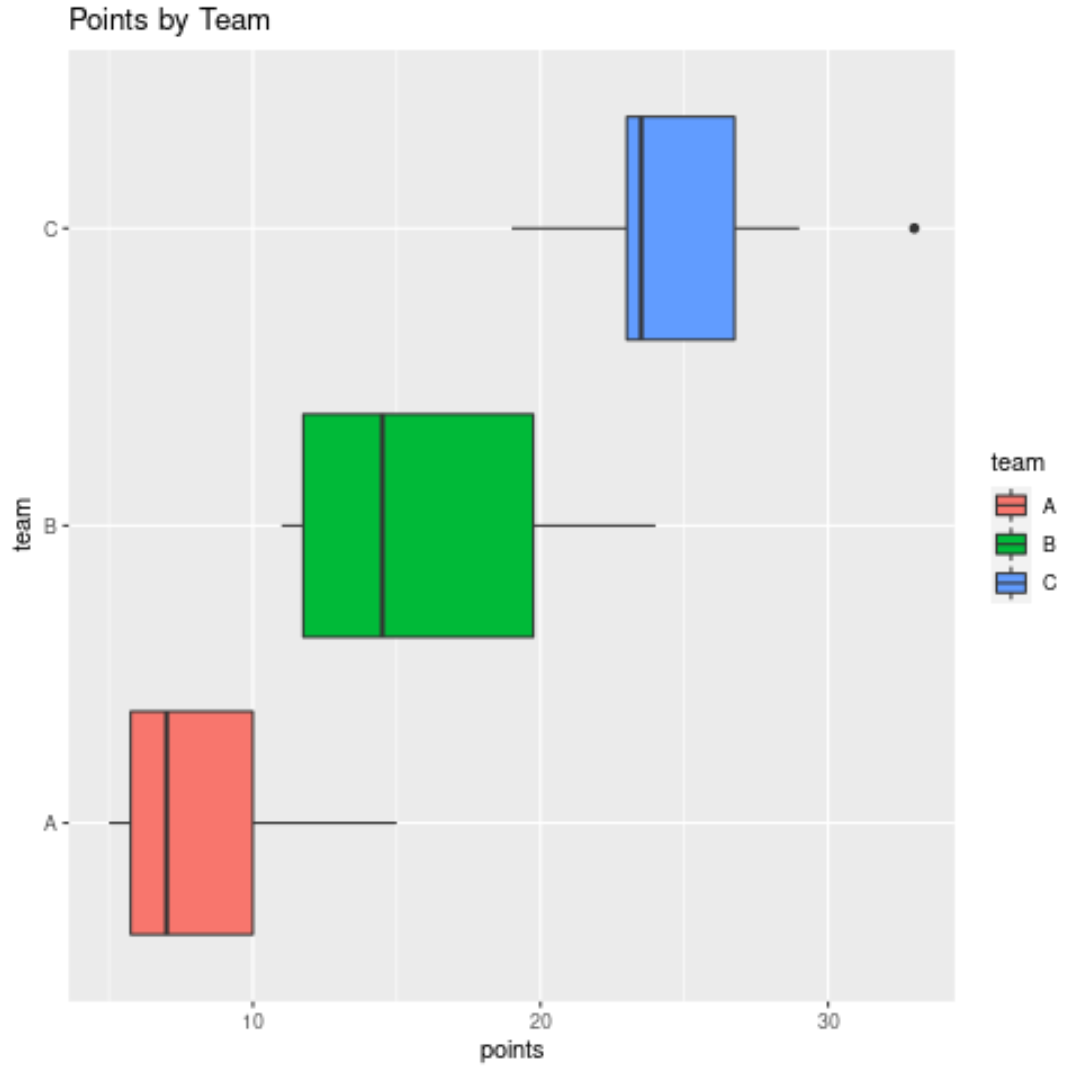Come creare box plot affiancati in r (con esempi)
I boxplot affiancati possono essere utilizzati per visualizzare rapidamente somiglianze e differenze tra diverse distribuzioni.
Questo tutorial spiega come creare boxplot affiancati in R e ggplot2 utilizzando il seguente frame di dati:
#create data frame df <- data. frame (team=rep(c(' A ', ' B ', ' C '), each= 8 ), points=c(5, 5, 6, 6, 8, 9, 13, 15, 11, 11, 12, 14, 15, 19, 22, 24, 19, 23, 23, 23, 24, 26, 29, 33)) #view first 10 rows head(df, 10) team points 1 to 5 2 to 5 3 to 6 4 to 6 5 to 8 6 to 9 7 to 13 8 to 15 9 B 11 10 B 11
Boxplot affiancati basati su R
Il codice seguente mostra come creare boxplot affiancati in base R:
#create vertical side-by-side boxplots boxplot(df$points ~ df$team, col=' steelblue ', main=' Points by Team ', xlab=' Team ', ylab=' Points ')

Possiamo usare l’argomento orizzontale=VERO per visualizzare i boxplot orizzontalmente anziché verticalmente:
#create horizontal side-by-side boxplots boxplot(df$points ~ df$team, col=' steelblue ', main=' Points by Team ', xlab=' Points ', ylab=' Team ', horizontal= TRUE )

Boxplot affiancati in ggplot2
Il codice seguente mostra come creare boxplot verticali affiancati in ggplot2:
library (ggplot2) #create vertical side-by-side boxplots ggplot(df, aes(x=team, y=points, fill=team)) + geom_boxplot() + ggtitle(' Points by Team ')

E possiamo usare l’argomento coord_flip() per visualizzare i boxplot orizzontalmente anziché verticalmente:
library (ggplot2) #create horizontal side-by-side boxplots ggplot(df, aes(x=team, y=points, fill=team)) + geom_boxplot() + coordinate_flip() + ggtitle(' Points by Team ')

Risorse addizionali
Come creare un grafico a barre in R
Come disegnare più linee in R
Come creare una piramide della popolazione in R